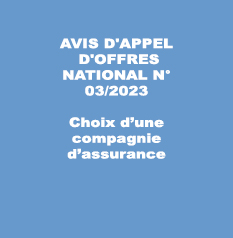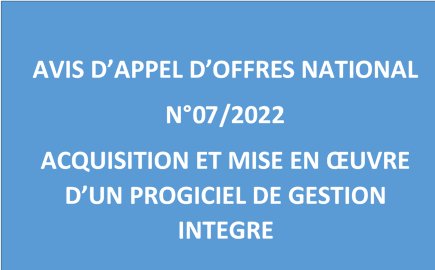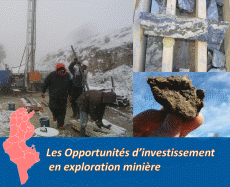| Programme annuel & rapport de suivi technique |
-

Rapport d'activités 2023
-

Programmes Techniques 2024
|
| Géocatalogue |

|
| Appels d'Offres |
-

ACQUISITION DES TICKETS RESTAURANT POUR LE PERSONNEL DE L’ONM
-

CHOIX D’UNE COMPAGNIE D’ASSURANCE
-

ACQUISITION ET MISE EN ŒUVRE D’UN PROGICIEL DE GESTION INTEGRE
|
|
Investir en Tunisie |


|
|
|
|
|
::
Documentation and Editions
>>
Research library
|
| |
|
[
Search by author
]
[
Search keyword
]
[
Search by index
]
[
Search by category
]
|
title of the reference :
|
Benthic foraminifers of the Archaeoglobitruncana kefiana zone from the basal Maastrichtian in the area of El Kef (Tunisia).
|
|
Publication Date:
|
1988
|
|
Author :
|
Salaj Jozef
|
|
Catalogue type :
|
Livre
|
|
Catalogue reference :
|
Vol. Spéc.N°2 (CHE) Rev. Paléobiologie Vol. Spéc.N°2 Benthic foraminifers of the Archaeoglobitruncana kefiana zone from the basal Maastrichtian in the area of El Kef (Tunisia). Les foraminifères benthiques de la zone à Archaeoglobitruncana kefiana du Maestrichtien basal de la région d'El Kef en Tunisie. Benthos '86 The Archaeoglobitruncana kefiana Zone, established at the profile of El Kef (BELIER et AL., 1983), so far unknown from other regions of the Tethys, is considered as the basal Maastrichtian zone by the author on the basis of the common occurrence with Pseudokossmaticeras brandti (REDTENBACHER). Its base is situated by 90 m higher than extinction of the species Radotruncana calcarata (CUSHMAN)and by 140 m lower than the appearance of the species Globotruncana falsostuarti (SIGAL). The benthic foraminifers, which are in the Globotruncana stephensoni Zone, thus in the formation above the last occurrence of the species Radotruncana calcarata (CUSHMAN)and before appearance of the species Archaeoglobitruncana kefiana (SALAJ et MAAMOUR)are still of Campanian character. They ar mainly represented by the species : neoflabellina efferata (WEDEKIND), N. rugosa rugosa (d'ORBIGNY), N. rugosa leptodisca (WEDEKIND), N. permutata KOCH, Bolivina incrassata REUSS, Bolivinoides delicatus CUSHMAN, B. granulatus KOFKER, B. miliaris HILTERMANN et KOCH, B. decoratus (JONES), B. praelevigatus BAAR and others. These species are also passing into the Archaeoglobitruncana kefiana Zone, in which, moreover, Neoflabellina numismalis (WEDEKIND)is present. The species unambiguously indicating the Maastrichtian base in the Boreal region as Bolivinoides australis EDGELL, Neoflabellina praereticulata HILTERMANN and N. reticulata (REUSS)are not present in this zone. Bolivinoides australis EDGELL, equally as Neoflabellina praereticulata HILTERMANN, appear from the base of the Globotruncana falsostuarti Zone (sample K-6)whereas Neoflabellinata reticulata (REUSS)appears from the base of the Racemiguemblina textulariformis Subzone only (sample K-85 R). bibliogr. faune foraminifère ; faune spécifique ; taxon benthique ; limite stratigraphique ; Campanien ; Maestrichtien ; Tunisie ; Tunisie Nord Occidentale ; Le Kef Salaj Jozef paleontologie
|
|
Indexation decimale :
|
paleontologie
|
|
Keywords :
|
faune foraminifère ; faune spécifique ; taxon benthique ; limite stratigraphique ; Campanien ; Maestrichtien ; Tunisie ; Tunisie Nord Occidentale ; Le Kef
|
|
Summary :
|
The Archaeoglobitruncana kefiana Zone, established at the profile of El Kef (BELIER et AL., 1983), so far unknown from other regions of the Tethys, is considered as the basal Maastrichtian zone by the author on the basis of the common occurrence with Pseudokossmaticeras brandti (REDTENBACHER). Its base is situated by 90 m higher than extinction of the species Radotruncana calcarata (CUSHMAN)and by 140 m lower than the appearance of the species Globotruncana falsostuarti (SIGAL). The benthic foraminifers, which are in the Globotruncana stephensoni Zone, thus in the formation above the last occurrence of the species Radotruncana calcarata (CUSHMAN)and before appearance of the species Archaeoglobitruncana kefiana (SALAJ et MAAMOUR)are still of Campanian character. They ar mainly represented by the species : neoflabellina efferata (WEDEKIND), N. rugosa rugosa (d'ORBIGNY), N. rugosa leptodisca (WEDEKIND), N. permutata KOCH, Bolivina incrassata REUSS, Bolivinoides delicatus CUSHMAN, B. granulatus KOFKER, B. miliaris HILTERMANN et KOCH, B. decoratus (JONES), B. praelevigatus BAAR and others. These species are also passing into the Archaeoglobitruncana kefiana Zone, in which, moreover, Neoflabellina numismalis (WEDEKIND)is present. The species unambiguously indicating the Maastrichtian base in the Boreal region as Bolivinoides australis EDGELL, Neoflabellina praereticulata HILTERMANN and N. reticulata (REUSS)are not present in this zone. Bolivinoides australis EDGELL, equally as Neoflabellina praereticulata HILTERMANN, appear from the base of the Globotruncana falsostuarti Zone (sample K-6)whereas Neoflabellinata reticulata (REUSS)appears from the base of the Racemiguemblina textulariformis Subzone only (sample K-85 R).
|
|
Exemplaries :
|
TU956
|
|
|
|
|
|
|
|



